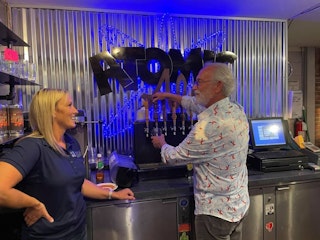B Reactor at the Manhattan Project National Historical Park
The story of the B Reactor includes some of the richest and most significant scientific accomplishments in the world.
It is the story of a community with a singular commitment to ending World War II; of the Manhattan Project, the world's first full-sized reactor; and of the Hanford Reach—the last free flowing, non-tidal stretch of the mighty Columbia River.
It is the story of American Indian tradition, early farming techniques, and railroading. It is the story of environmental research and restoration. From the largest remaining shrub-steppe eco-system in the world, to an "Atomic City" built overnight...it is the story of sophisticated advancements carved from a rugged northwest territory. It is a unique story, and one that will capture the hearts and imaginations of all who visit. The heart of the story is of course the B Reactor.

The Hanford Site's B Reactor was the first full-scale nuclear reactor to operate in world history. It was built by the DuPont Corporation under contract to the Army Corps of Engineers Manhattan Engineer District (MED) to produce plutonium for the United States' military effort in World War II. The Hanford region was selected for the project because of it's desolate landscape with low population. The B Reactor has been recognized as a National Engineering Historic Landmark and a Nuclear Historic Landmark.
Each year from April through November, the Department of Energy hosts free public tours of historic Hanford and the B Reactor. Tours of the B Reactor are now more accessible than ever before. Signing up in advance through the Manhattan Project National Historical Park website is still recommended, but many times there are seats available same day, so it is best to call the Manhattan Project B Reactor Tour Headquarters at 509-376-1647 at when trying to make last minute arrangements.
Special group tours for 20 or more can be arranged by calling the Tour Headquarters.
For additional information about the B Reactor visit the B Reactor Museum Association's web site.
































